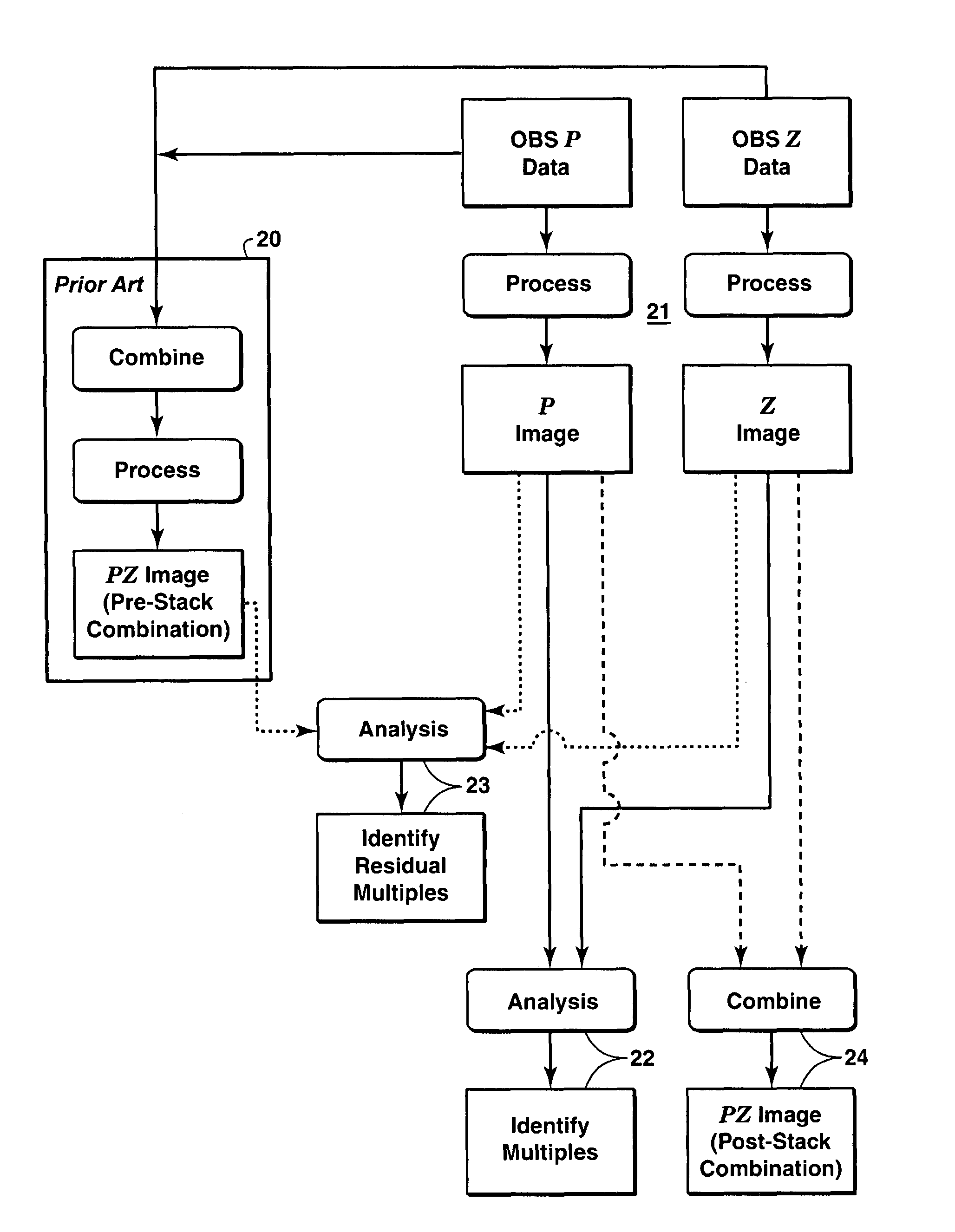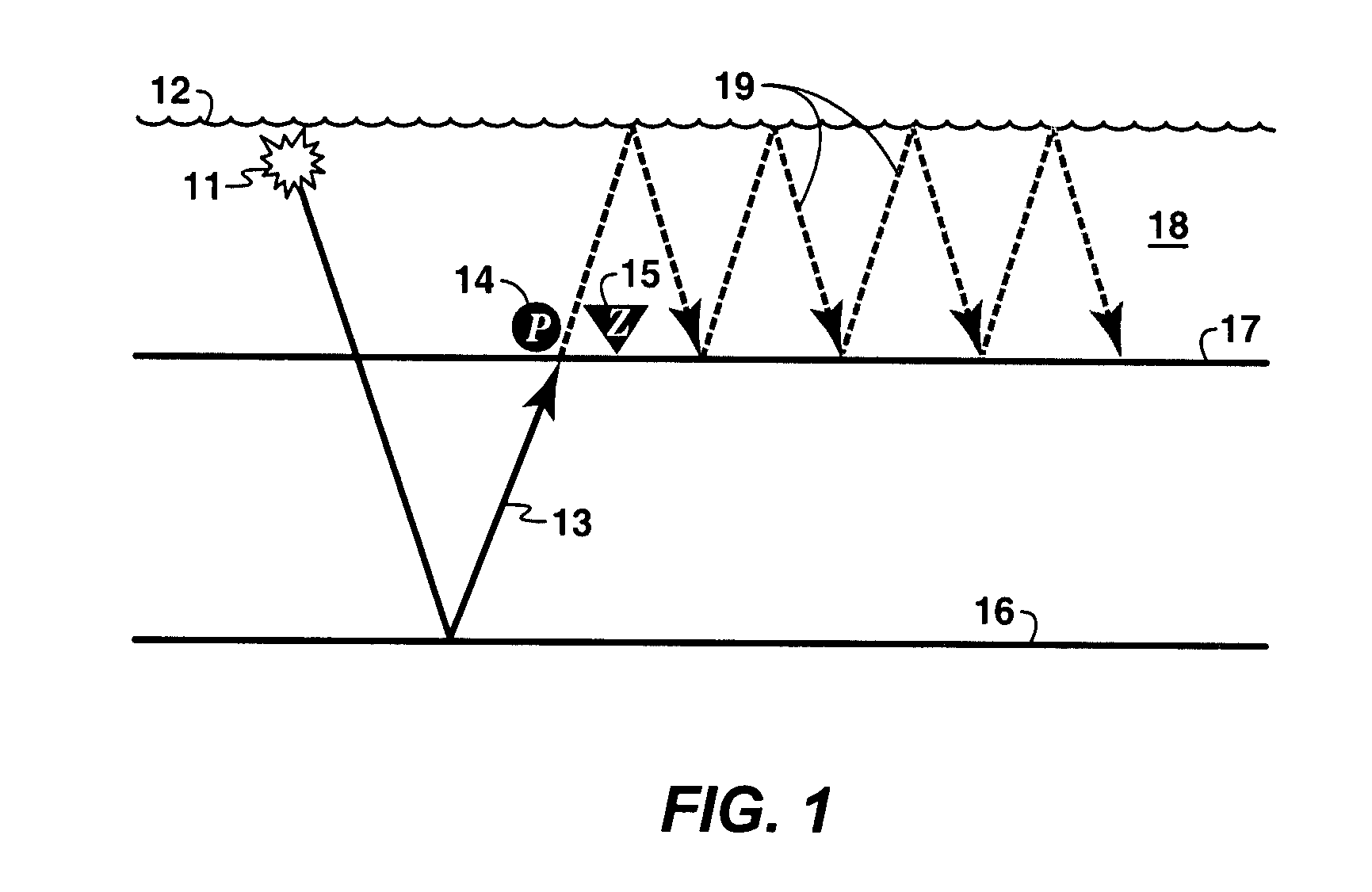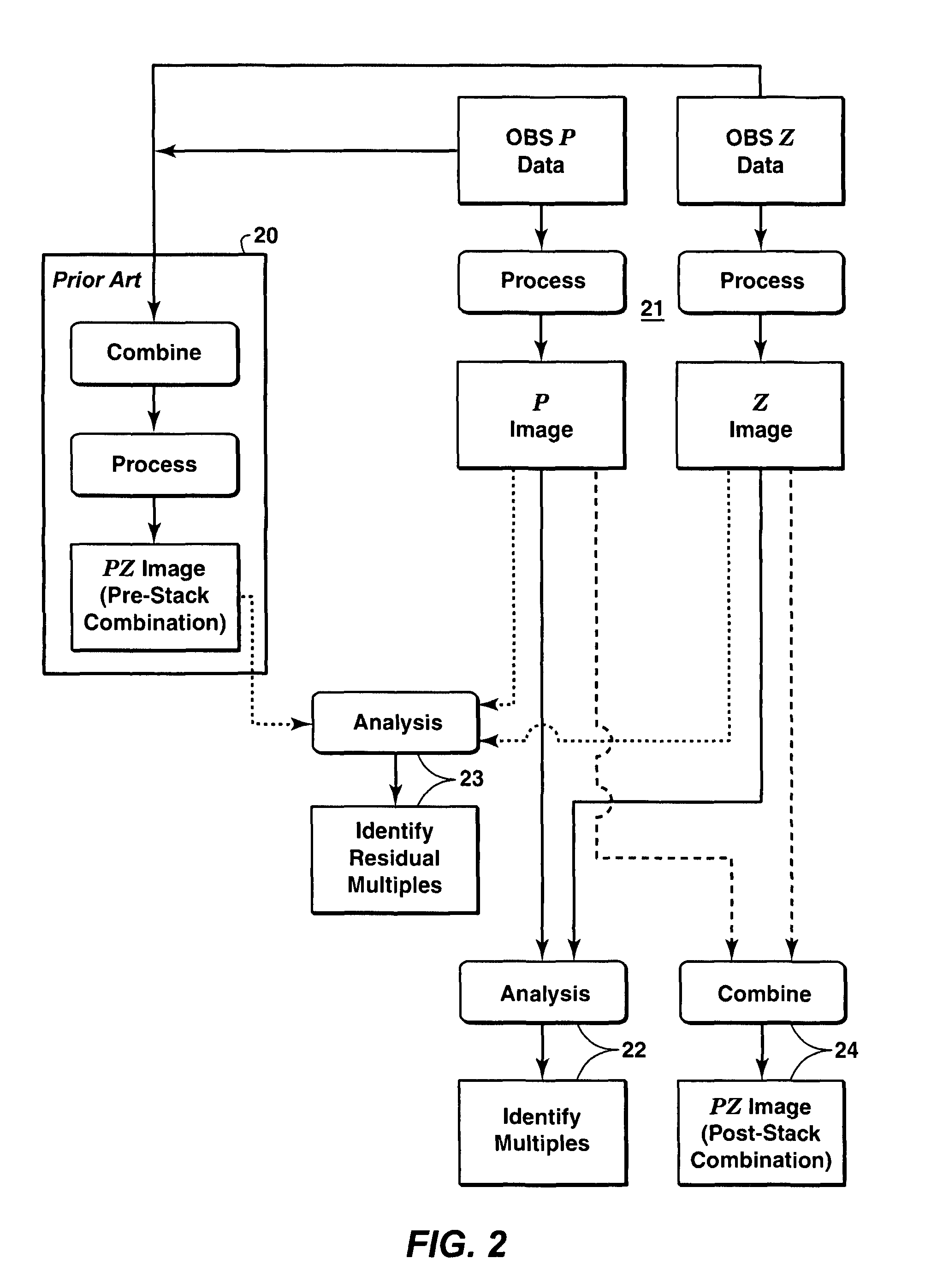Identification and suppression of multiples in ocean bottom seismic data
a seismic data and multiple technology, applied in the field of geophysical prospecting, can solve the problems of contaminated seismic data, incomplete removal of multiples, and unwelcome noise of seismic data collected in the marine environmen
- Summary
- Abstract
- Description
- Claims
- Application Information
AI Technical Summary
Benefits of technology
Problems solved by technology
Method used
Image
Examples
examples
[0037]FIGS. 3A-D provide an example of the present inventive method applied to actual OBC data. FIGS. 3A-3D are seismic sections, i.e. a plot of seismic data along a horizontal line. The vertical axes show depth in meters, and the horizontal axes represent position along the line in kilometers. FIG. 3A shows an image from a pre-stack combination of OBC hydrophone and geophone data, i.e., the traditional approach used with 2C OBS data. The reader's attention is directed to the arrow in FIG. 3A, and the prominent marker dot that the arrow points toward. The weak seismic reflection indicated by the dot could be considered a multiple, but equally it could be considered a true seismic reflection. The present inventive method will identify this as a multiple and enable its suppression, as illustrated in the succeeding drawings.
[0038]FIG. 3B shows the image from OBC hydrophone data (the “P image” on the flowchart of FIG. 2). The seismic reflection at the marker dot is continuous with stron...
PUM
 Login to View More
Login to View More Abstract
Description
Claims
Application Information
 Login to View More
Login to View More - R&D
- Intellectual Property
- Life Sciences
- Materials
- Tech Scout
- Unparalleled Data Quality
- Higher Quality Content
- 60% Fewer Hallucinations
Browse by: Latest US Patents, China's latest patents, Technical Efficacy Thesaurus, Application Domain, Technology Topic, Popular Technical Reports.
© 2025 PatSnap. All rights reserved.Legal|Privacy policy|Modern Slavery Act Transparency Statement|Sitemap|About US| Contact US: help@patsnap.com



